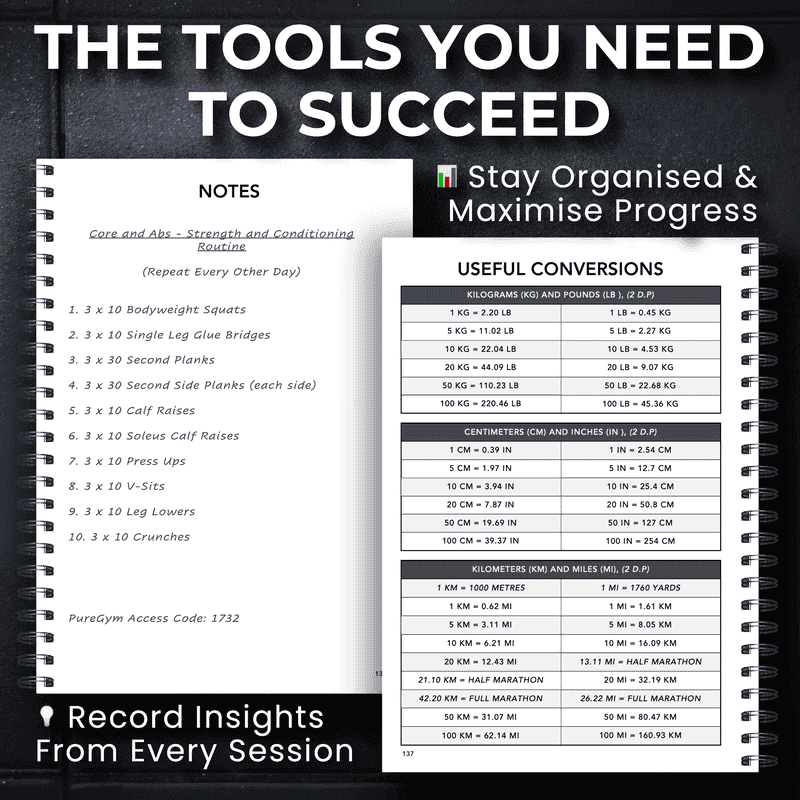
How Strength And Conditioning Benefits Endurance Athletes
As an endurance athlete, your weeks are already packed with rigorous training sessions, eating right, and getting enough rest. So the thought of adding another workout to the mix might feel overwhelming, especially a Strength and Conditioning session that has very little to do with endurance training...
But what if Strength and Conditioning could not only support but actually enhance your endurance training? In this article, we'll dive into five reasons why incorporating Strength and Conditioning into your routine can be a game-changer.
1. Injury Prevention
In endurance sports, we repeat movements thousands of times in a single session, leaving us very susceptible to injury - if any part of our movement chain is even slightly inflamed, then more of the same repetitive movements will only make it worse...
Strength and Conditioning can help through strengthening the major and supporting muscles beyond the movements we typically train them in, making them more adaptable and less likely to injure from adverse loads. Stronger stabilising muscles also provide greater support, reducing the demand on less flexible elements such as ligaments and tendons.
2. Improved Efficiency
In endurance sports, a few major muscles do the majority of the work, but we still rely on our other muscles to engage and help control the movements. For example, a runner can turn their legs over as quickly as they want, but without a strong core their upper body will simply flop about and waste their energy.
Strength and Conditioning can help by targeting and strengthening our whole body, enabling us to hold our most efficient positions for as long as possible. It also improves our coordination and stability, leading to smoother and more controlled movements, helping us to get the most out of the energy we expend during the exercise.
3. Helps Smooth Out Imbalances
We all have small imbalances all over the place, but if left unaddressed then endurance athletes develop compensations that put uneven stresses on ligaments, tendons and joints, all of which can cause chronic injuries.
Strength and Conditioning can help to minimise imbalances by targeting and working major and supporting muscle groups in isolation, reducing any dominance that one side may have over the other. This also stimulates unused muscles to engage, minimises the effects of imbalances, and ultimately reduces the risk of asymmetric loading and overuse injuries in the long term.
4. Increased Power Available
By increasing our strength, our muscles can produce more force with each contraction. This additional strength can benefit us in more than one way:
1. We can produce even more power to go faster, climb harder, and get round the course quicker.
2. We can continue to produce the same power output that we can currently produce, but at a smaller % of our maximum available strength, so it will feel like we are putting in less effort.
Either way, having more available strength will always work to your advantage.
5. Mental Toughness
Strength and Conditioning exposes us to different challenges than the ones we usually face in our normal endurance sessions. Pushing through demanding workouts builds mental toughness, discipline, and confidence, all of which are crucial for endurance athletes facing events that test their mental strength just as much as their physical limits.
Getting Started
We have seen in the points above how Strength and Conditioning can help us both physically and mentally, and not only support but accelerate our endurance training development.
But how can we get started if we haven't used this tool in our programs before?
The key is to break yourself in slowly, and not do anything too intense too soon. Unlike Strength athletes, our goal is not to stack on heavy weights and try to set PB's every week... For endurance athletes, the aim is to complement our main sport by ensuring the muscles in our body can engage effectively when we need them.
To achieve this aim, 1-2 x 20 minute sessions a week is a good place to start for beginners, building up to 2-3 x 45 minute sessions. Keep the rep range high (above 10), and the weights very low - form is the priority and the weight shouldn't feel too heavy, but be challenging on the last rep or two.
So, whether you're aiming for personal milestones or competitive success, integrating strength and conditioning can be the game-changer you need to reach your goals and excel in your athletic endeavours.

















